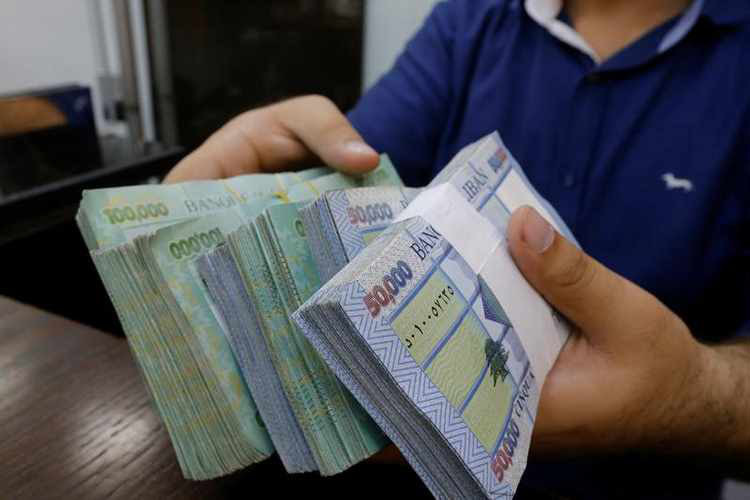Technical Note on the Adverse Financial Environment in Lebanon
December 5, 2019
Lebanon’s combined currency, banking, and sovereign default crisis has started to materialize. On a political level, policy makers have ignored the crisis. Meanwhile, the Central Bank has only taken measures to avoid running out of hard currency reserves and favored discretionary informal capital controls at the banking level to avoid running out of FX liquidity. This drying up of USD liquidity has driven the LBP to depreciate by 33% against the USD and caused a rise in poverty due to the inflation path through.
The points below explain the current situation technically:
1. Lebanon is suffering from a dollar liquidity shortage caused by a cumulative balance of payments deficit of USD 17.61Bn between 01/2011 and 09/2019. This deficit has been mostly caused by a structural problem in the Lebanese economic model, favoring imports over local production, in addition to other external factors, mainly the slowdown in the GCC.
2. The current crisis exposed BDL’s worsening FX position. As of the end September 2019 BDL’s net FX position stands at USD -55.70Bn; steaming from the fact that it carries on the liability side of its balance sheet a total of USD 85Bn in interest yielding FX banking reserves with only USD 29.30Bn in FX liquidity to cover for them. Furthermore, it should be noted that of that liquidity USD 10.69Bn can be used since BDL has an obligation to maintain USD 18.61Bn in FX required reserves.
3. BDL’s response aims to protect its own balance sheet. In light of the relatively low level of usable reserves BDL sized all exchange operations and raised the rate on its emergency USD lending facility to 20%. Furthermore, BDL has taken the decision to restructure its debt and pay out 50% of its FX debt servicing cost in LBP over the next six months.
4. BDL’s response decreases income on savings. BDL has instructed the banks to pay 50% of the due interest on dollar deposits in LBP and to force clients to redeposit these LBP interests and block them for a year. It has also instructed the banks to cap interest rates on new deposits at 5% on USD and 8.5% on LBP deposits.
5. BDL has been the main financier of the government since Q3 2018 at below market rates.
- As mentioned in 2019’s budget BDL has covered the Ministry of Finance’s Eurobond payables for 2019, the latest being on November 2019, the Ministry of finance paid BDL back as such:
- In return for USD 2.929Bn in maturing bonds it provided BDL with two Eurobonds with a combined face value of USD 3Bn and a coupon rate of 1%.
- In return for USD 2.149Bn in accruing interest the ministry of finance provided BDL lira denominated debt instruments at well below market rates contributing to BDL’s net negative FX position.
- Similarly, informed sources at the Ministry of Finance stated that BDL has started to buy the government’s LBP denominated debt at coupon rates of 1% and will continue to finance the treasury in the near future at this rate.
- To cover for these operations BDL has raised the LBP money supply, over the last two weeks of November it has raised the level of cash in circulation by 14%.
6. Secondary LBP market rate overshoots official rate by %. Prior to October’s civil movement BDL has indirectly allowed the creation of a secondary exchange market through only servicing core imports at the official rate. Due to BDL freezing all of its exchange operations and a run to the dollar the secondary USD/LBP exchange rate has went up by 33% with respect to the official rate as of 12/03/2019.
7. The current crisis exposed the weaknesses in the banking sector’s balance sheets. While Lebanese commercial banks do not suffer from an exchange mismatch, they do have a maturity mismatch; the average time to maturity of a deposit at a bank floats at around a year meanwhile their investments are longer in nature. The rise in demand on withdrawals combined with this maturity mismatch has left banks incapable to service their current account obligations.
8. Association of Banks protects banks’ solvency via an unequitable solution. In response to the liquidity shortage stemming from the weak balance sheet of BDL and that of the collective banking sector the Association of Banks has instructed the implementation of discretionary capital controls. These controls are not designed in a way to meet the basic needs of citizens and leaks have shown that large transfers are still taking place.
9. No measures taken to alleviate loan pressure on individuals and businesses. The sharp economic contraction, liquidity shortage, and currency devaluation have shifted down profits and wages and decreased the ability to cover monthly debt installments. This has led to a rise in non-performing loans.
10. Not only the measures taken by BDL in terms of restructuring interest rates on bank deposits are not progressive (non-equitable sharing of the burden among depositors), but in light of the socioeconomic situation, BDL would have been expected at the least to provisionally instruct the banks to take measures to reschedule installments on existing debt obligations, until a new government is formed and a fair and comprehensive crisis management plan is put in place.
Download as PDF